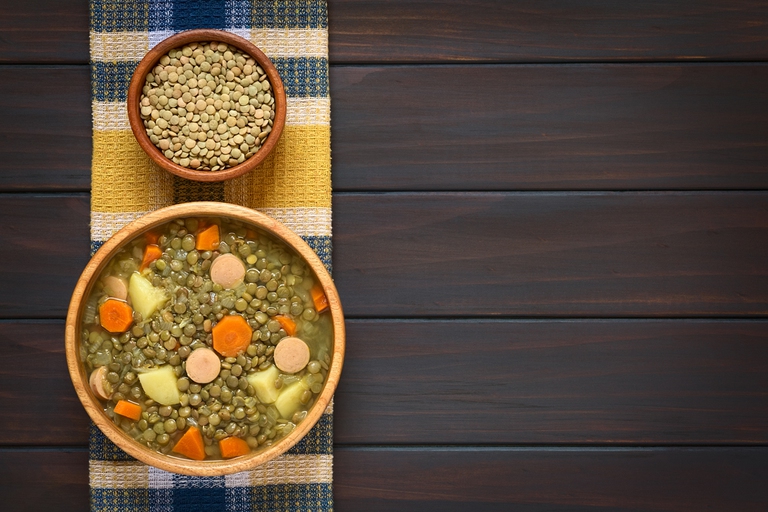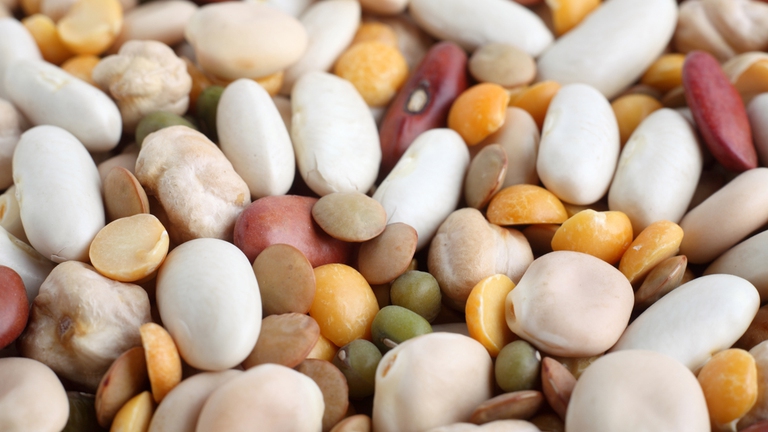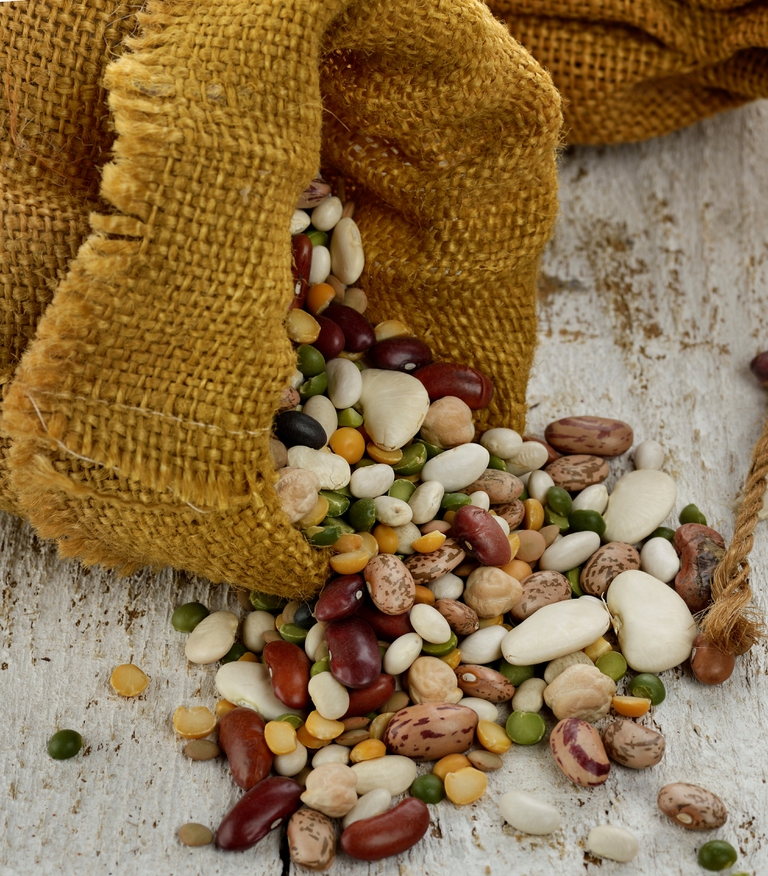
Factory farming conditions and antibiotic-resistant pathogens emerging as a result of them pose an existential threat to humans in the form of zoonotic diseases. Why it’s time to produce and consume food more thoughtfully.
The UN nominated 2016 the International year of pulses to celebrate the sustainability of grain legumes that are one of the main ingredients of the diet of the world’s most ancient peoples.
Beans, lentils, chickpeas, fava beans, peas, grass peas, lupines: all these are types of legumes that should be on our table several times a week. Low in fat and high in fiber, they are a good source of vegetable protein and if they’re combined with grains, such as in recipes like pasta and beans, rice and lentils, pasta and chickpeas, they will have a composition of essential amino acids similar to that of meat. But, unlike the latter, legumes are more sustainable from an environmental point of view because they require less natural resources to grow. According to the FAO, the UN Food and Agriculture Organisation, the production of one kilo of lentils or split peas requires 50 liters of water. While a kilo of chicken meat requires 4,325 kilos of water and a kilo of beef 13,000 kilos of the precious source. Thanks to their lower water footprint producing legumes is a smart choice in arid and drought-prone areas.
Raising global awareness on the importance of consuming legumes to support human health and food security. Their high nutritional value makes them perfect to combat malnutrition in its two meanings: lack of food and, on the contrary, the excess of calories ingested. “Pulse crops such as lentils, beans, peas and chickpeas are a critical part of the general food basket. Pulses are a vital source of plant-based proteins and amino acids for people around the globe and should be eaten as part of a healthy diet to address obesity, as well as to prevent and help manage chronic diseases such as diabetes, coronary conditions and cancer; they are also an important source of plant-based protein for animals. In addition, pulses are leguminous plants that have nitrogen-fixing properties which can contribute to increasing soil fertility and have a positive impact on the environment” fao.org reads.
To promote the use of legumes in cooking, FAO will realise projects meant to make people know how they can be used and their beneficial properties for human health throughout 2016, trying to develop their production and improving farming systems.
Unlike other healthy but more expensive foods that only grow in some territories, legumes are grown all over the world, they are cheap and have been included in the diet of many people of different cultures for thousands of years. According to historians, one of the reasons why the Romans managed to conquer the world is that they had with them stocks of lentils and beans and they didn’t worry about killing animals or finding ways to preserve them. The Romans chose legumes because they’re easily transportable yet nutritious and easy-to-cook food items rich in protein, ideal for long distances and because they don’t deteriorate easily like the meat.
Nowadays, many consumers don’t know how to use them, how much time they should soak them or cook them. So they end up leaving them in the pantry. Split peas and lentils, however, are quick to prepare, since they’re cooked more or less during the same time of rice.
Beans, chickpeas and all other legumes are almost prepared in the same and you should follow some simple rules: you have to soak them for 24 hours before cooking them; you should could cook them two hours at least or four hours at most; you should season them with extra virgin olive oil and herbs. You can use a pressure cooker to cook them faster.
Siamo anche su WhatsApp. Segui il canale ufficiale LifeGate per restare aggiornata, aggiornato sulle ultime notizie e sulle nostre attività.
![]()
Quest'opera è distribuita con Licenza Creative Commons Attribuzione - Non commerciale - Non opere derivate 4.0 Internazionale.
Factory farming conditions and antibiotic-resistant pathogens emerging as a result of them pose an existential threat to humans in the form of zoonotic diseases. Why it’s time to produce and consume food more thoughtfully.
The world of cinema recognises the link between food choices and the climate crisis by offering vegan menus for awards season events, including at the most important of them all: the Oscars.
Let’s look at the reasons behind the growth of veganism in India, as a small yet vocal section of the population turns towards this diet and lifestyle in the largest milk producing country in the world.
by Jeffrey Y. Campbell, Manager of the Forest and Farm Facility at FAO In the Ecuadorian Amazon, Kichwa farmers grow dozens of products on tiny parcels of land. Their lands hum with biodiversity, yielding nutritious foods that have sustained families for generations. Wandering among fruit and nut trees and crops, these indigenous agroforesters fill their baskets
Mint has many health benefits, but in food it’s often accompanied by artificial green colourings. Instead, Galatea has created a green mint ice cream in a completely natural way.
We’re talking about Galatea, a company that produces semi-finished products for artisanal ice creams using high quality ingredients, natural colouring, excluding thickeners and hydrogenated fats, respecting the environment and supporting the less fortunate.
The mad rush to fake food, like fake meat made with genetically-modified soy, ignores the importance of the diversity of our foods and culinary cultures. It’s a recipe to accelerate the destruction of the Planet and our health.
Like with all foods, the quality of an ice cream can be discerned by reading its label. An expert explains how to do this, and tells us how their company steers clear of chemicals, using only natural ingredients to produce an excellent and “free” ice cream.
Quality ingredients, no artificial colouring and hydrogenated fats. These are the main features of a great ice cream. But what makes an ice cream parlour “good”, i.e. sustainable?










